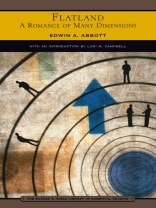Since its first appearance in 1884, Edwin Abbott Abbotts
Flatland: A Romance of Many Dimensions has charmed and intrigued readers and scholars alike with its inventive mix of fantasy and reality. What on the surface amounts to a clever means of teaching principles of mathematics and science, upon deeper inspection emerges as an entertaining yet thought-provoking literary experiment. Through the eyes of its narrator A. Square, the novel implicitly satirizes a Victorian society in the grips of extraordinarily rapid change.
Already having delighted and inspired for more than a century,
Flatland continues to enjoy a rightful place in literary, scientific, and philosophical history, inviting its readers to be transported without roaming too far from home.
O autorze
Widely published as a scholar, educator, and theologian, Edwin Abbott Abbott (1838-1926) remains best known for
Flatland. At age twelve he entered the City of London School where he quickly excelled, particularly in mathematics. A scholarship took Abbott to Cambridge University in 1857, where he focused on Classics. He became a priest in 1863, yet earned his living and gained a considerable reputation as an educator.












